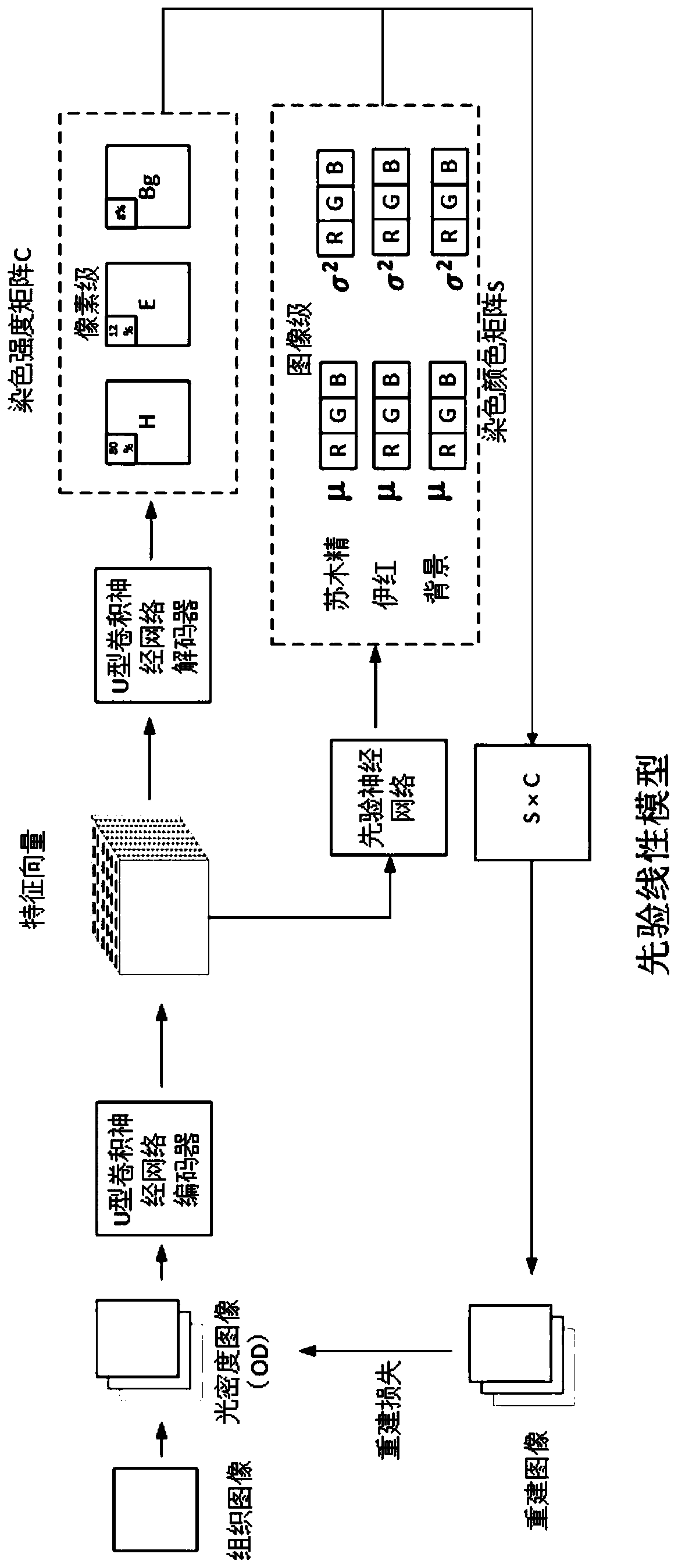Pathological image multi-staining separation method based on deep learning
A technology of pathological images and deep learning, applied in instruments, character and pattern recognition, computer components, etc., can solve problems such as insufficient deconvolution images, achieve good generalization ability, and improve the effect of dyeing separation performance
- Summary
- Abstract
- Description
- Claims
- Application Information
AI Technical Summary
Problems solved by technology
Method used
Image
Examples
Embodiment
[0069] The raw images were densitometrically transformed and input into a ResU-Net model with a 12-level architecture for multi-task staining separation. The ResU-Net model is supported by three parts: contraction path, bridging path, and expansion path to complete linear staining color matrix prediction, nonlinear staining color matrix prediction and staining concentration prediction. The contraction path consists of the first 1-4 stages of the network, which are used to reduce the spatial dimension of the feature map, and at the same time increase the number of feature maps layer by layer, and extract the input image as compact features. Level 5 is the bridging part that connects the contraction and expansion paths and implements the linear dye color matrix prediction function. The expansion path is composed of a 6-9 level network, which is used to gradually restore the details of the target and the corresponding spatial dimensions. The expansion path will be up-sampled, and...
PUM
 Login to View More
Login to View More Abstract
Description
Claims
Application Information
 Login to View More
Login to View More - R&D
- Intellectual Property
- Life Sciences
- Materials
- Tech Scout
- Unparalleled Data Quality
- Higher Quality Content
- 60% Fewer Hallucinations
Browse by: Latest US Patents, China's latest patents, Technical Efficacy Thesaurus, Application Domain, Technology Topic, Popular Technical Reports.
© 2025 PatSnap. All rights reserved.Legal|Privacy policy|Modern Slavery Act Transparency Statement|Sitemap|About US| Contact US: help@patsnap.com



